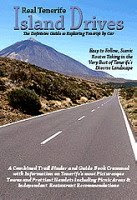There are no historic towns to bus the tourists to, there are no real towns of any sort for most of the length of the east coast and yet that’s not to say that it doesn’t have its curious corners, but they do tend to be tucked away, some along roads that seem to lead nowhere. Some are quite well known, like the wind farms visible from the motorway, or the deserted lepers’ colony overlooking the coves at Abades, others I’ve never seen photos of nor heard their names mentioned in almost six years of researching the island.
The first time we realised there were oddities to be found was when we were looking for a donkey sanctuary ‘Los Burros Alegres’. We didn’t find the donkeys, they were long gone, but we ended up in a decent sized town which was unremarkable except that it didn’t have any tarmac on its streets and some roads led straight into the hillside beside the town. For a while we got completely lost in the strange town and had to send a text to friends that read:
‘Can’t meet up, we’re stuck looking for the happy donkeys in a town with no roads.’
The map we were using, one of the better Tenerife maps, didn’t even have the town marked on it.
 Since then whenever we get the chance we leave the TF1 and head off into the unknown to see what lies at the ends of narrow roads with no names. Usually there are little fishing communities, many with the same interchangeable harbour which has us questioning whether we’ve actually visited the place before, but sometimes we find somewhere really quite bizarre. Last week we stumbled on two of these places.
Since then whenever we get the chance we leave the TF1 and head off into the unknown to see what lies at the ends of narrow roads with no names. Usually there are little fishing communities, many with the same interchangeable harbour which has us questioning whether we’ve actually visited the place before, but sometimes we find somewhere really quite bizarre. Last week we stumbled on two of these places. The first consisted of a ramshackle promenade where the houses were built almost on top of each other. There wasn’t a street to speak of just an undulating path weaving alongside weather beaten fishermen’s cottages and through narrow arches. On the seaward side a thick bleached white rope and driftwood fence acted as a barrier to the Atlantic which pounded the shoreline yards from the unprotected houses. It was an untidy hotchpotch of a place, but that isn’t to say that it didn’t possess a certain anarchic charm.
The first consisted of a ramshackle promenade where the houses were built almost on top of each other. There wasn’t a street to speak of just an undulating path weaving alongside weather beaten fishermen’s cottages and through narrow arches. On the seaward side a thick bleached white rope and driftwood fence acted as a barrier to the Atlantic which pounded the shoreline yards from the unprotected houses. It was an untidy hotchpotch of a place, but that isn’t to say that it didn’t possess a certain anarchic charm.The second place was even more of a surprise, consisting partly of a troglodyte community. Many of the houses on its main street were built into the cliffs, with a few actually constructed inside a large cave. The place even had a decent swimming pool where most of the town’s inhabitants seemed to be sunning themselves. Once again it wasn’t mentioned on any maps I’ve got of Tenerife.
This island is always surprising us; these places are all within half an hour’s drive of the main southern tourist resorts, yet strolling through their odd little streets it’s easy to believe that you’re somewhere that has been completely by-passed by tourism. In a way, I suppose they have.




No comments:
Post a Comment